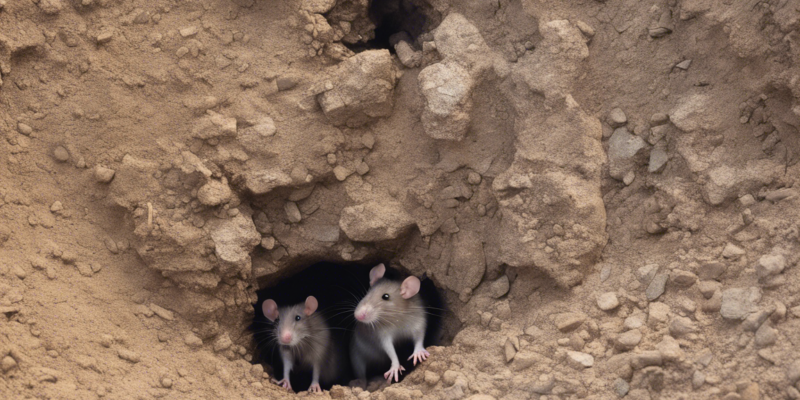
Uncovering the Risks: Rat Hole Mining Demystified
Rat hole mining is a type of small-scale mining practiced in the northeastern states of India, primarily in the state of Meghalaya. It involves digging narrow holes, often only 3-4 feet wide and several feet deep, to extract coal. This practice gained notoriety due to its hazardous working conditions, environmental degradation, and human rights violations. In this article, we will delve deeper into the risks associated with rat hole mining, exploring its environmental impact, the dangers to miners, and the legal framework surrounding this contentious practice.
Environmental Impact of Rat Hole Mining
Rat hole mining has severe environmental implications, primarily due to the unscientific and unregulated manner in which it is conducted. Some of the key environmental concerns include:
1. Deforestation
- Rat hole mining often involves cutting down forests to access coal reserves, leading to massive deforestation in the region.
- This deforestation can result in soil erosion, loss of biodiversity, and disruption of entire ecosystems.
2. Water Pollution
- The mining activity contaminates nearby water bodies with coal dust, sediment, and other pollutants.
- This pollution can have a detrimental impact on the aquatic life and the communities relying on these water sources for their livelihood.
3. Air Pollution
- The burning of coal extracted from rat hole mines contributes to air pollution, affecting both local air quality and global climate change.
- The release of harmful gases and particulate matter poses significant health risks to both miners and nearby communities.
4. Land Degradation
- The reckless mining practices lead to land degradation, rendering large tracts of land unsuitable for agriculture or habitation.
- This degradation further exacerbates the environmental degradation in the region.
Risks to Miners
Apart from the environmental impact, rat hole mining poses serious risks to the miners involved in this hazardous occupation. Some of the key dangers faced by these workers include:
1. Cave-ins and Accidents
- The narrow underground tunnels are prone to collapse, leading to cave-ins that can bury miners alive.
- Accidents involving falling rocks, equipment malfunctions, or explosive mishaps are also common in these mines.
2. Health Hazards
- Miners are exposed to high levels of dust, toxic fumes, and inadequate ventilation underground, leading to respiratory problems and other health issues.
- Lack of safety equipment and medical facilities further exacerbate the health risks associated with rat hole mining.
3. Child Labor and Exploitation
- Rat hole mining often exploits child labor, with children as young as 10-11 years old working in dangerous conditions.
- These children are deprived of education, exposed to health hazards, and trapped in a cycle of poverty and exploitation.
Legal Framework and Regulation
The practice of rat hole mining has been subject to legal scrutiny due to its detrimental impact on the environment and the well-being of the miners. Some of the key legal provisions and regulations governing rat hole mining in India include:
1. National Green Tribunal (NGT) Orders
- The National Green Tribunal has issued several orders directing the Meghalaya government to curb illegal rat hole mining and ensure environmental compliance.
- These orders have emphasized the need for sustainable mining practices and strict enforcement of environmental regulations.
2. Coal Mines (Special Provisions) Act, 2015
- The Coal Mines (Special Provisions) Act aims to streamline coal mining in India and promote transparency and accountability in the sector.
- This legislation seeks to address the loopholes that allow illegal mining practices like rat hole mining to thrive.
3. State Mining Policies
- States like Meghalaya have introduced mining policies to regulate coal extraction and promote sustainable mining practices.
- These policies include provisions for mine closure, land reclamation, and rehabilitation of mining-affected areas.
Frequently Asked Questions (FAQs)
1. What is the origin of the term “rat hole mining”?
- The term “rat hole mining” originated from the narrow and unsafe tunnels dug by miners, resembling the burrows of rats.
2. Why is rat hole mining prevalent in Meghalaya?
- Meghalaya is rich in coal reserves, and rat hole mining emerged as a cheap and informal way of extracting coal in the region.
3. How does rat hole mining impact local communities?
- Rat hole mining displaces indigenous communities, disrupts their traditional livelihoods, and exposes them to health and environmental risks.
4. Is rat hole mining legal in India?
- Rat hole mining is illegal in India following a ban by the National Green Tribunal due to its harmful environmental and social consequences.
5. What are the alternative livelihood options for former rat hole miners?
- Providing skill development training, promoting sustainable agriculture, and creating eco-tourism opportunities are some alternative livelihood options for former rat hole miners.
In conclusion, rat hole mining continues to pose significant risks to both the environment and the miners involved in this perilous activity. Addressing these risks requires a multi-faceted approach involving stringent enforcement of regulations, promotion of sustainable mining practices, and support for the affected communities. Only through concerted efforts can we mitigate the adverse impacts of rat hole mining and pave the way for a more sustainable and responsible mining industry.



